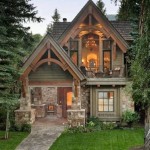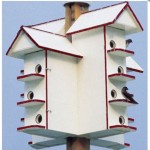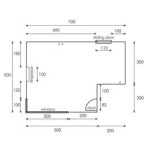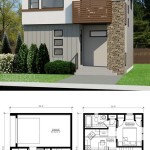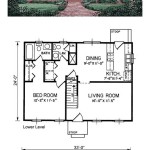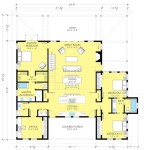Free DIY Dog House Plans: A Comprehensive Guide
Providing adequate shelter for a dog is a fundamental aspect of responsible pet ownership. A well-constructed dog house offers protection from the elements – sun, rain, wind, and snow – ensuring the dog's comfort and well-being. While commercially available dog houses are readily accessible, constructing one independently using free DIY dog house plans offers a cost-effective and customizable alternative. This article provides a detailed guide to navigating the world of free dog house plans, covering crucial considerations, essential materials, construction techniques, and factors influencing the final design. The aim is to equip individuals with the knowledge and resources necessary to build a functional and aesthetically pleasing dog house, perfectly tailored to their dog's needs and their outdoor space.
The advantages of opting for a DIY dog house project extend beyond mere cost savings. Building a dog house personally allows for complete control over materials, ensuring the use of safe, non-toxic components. It facilitates customization to suit the specific breed, size, and individual preferences of the dog. Moreover, a DIY project offers a sense of accomplishment and a deeper connection to the dog's well-being. However, successful execution requires careful planning, adherence to safety guidelines, and a thorough understanding of basic construction principles.
I. Selecting the Right Dog House Plan
The initial step in any DIY dog house project is selecting a suitable plan. The internet offers a plethora of free dog house plans, ranging in complexity and design. Navigating this abundance necessitates careful consideration of several factors. The most important consideration is the dog's size. The dog house must be large enough for the dog to comfortably stand, turn around, and lie down. Overly large houses, however, can be less effective at retaining heat during colder months. A snug fit, allowing sufficient movement, is the ideal compromise.
Breed-specific characteristics also influence plan selection. Short-haired breeds, particularly those sensitive to cold, benefit from insulated dog houses with smaller entrances. Breeds prone to overheating may require designs with ample ventilation. The dog's age and health status are further considerations. Senior dogs or those with mobility issues may require a dog house with a low entrance and a flat, easily accessible floor. Finally, the available space in the yard or garden dictates the dimensions of the dog house plan.
Once these factors are assessed, the search for a suitable plan can begin. Numerous websites, online forums, and DIY communities offer free dog house plans. When reviewing these plans, it is essential to pay close attention to the following:
- Clarity and Detail: The plan should provide clear, step-by-step instructions with detailed diagrams and measurements. Ambiguity can lead to errors and frustration during construction.
- Material List: A comprehensive material list is crucial for accurate budgeting and procurement. The list should specify the types, dimensions, and quantities of all required materials, including lumber, fasteners, and insulation.
- Tool Requirements: The plan should outline the necessary tools for the project. Ensure access to these tools or the ability to rent or borrow them before commencing construction.
- Safety Considerations: Reputable plans will emphasize safety precautions and recommend appropriate protective gear, such as safety glasses, gloves, and dust masks.
- Reviews and Feedback: If available, review user comments and feedback on the plan. This feedback can provide valuable insights into potential challenges and necessary modifications.
Downloading multiple plans and comparing them can be beneficial. Some plans may be more suitable for beginner builders, while others are more complex and require advanced carpentry skills. It is advisable to choose a plan that aligns with existing skill level and available time.
II. Essential Materials and Tools
The selection of appropriate materials directly impacts the durability, weather resistance, and overall safety of the dog house. Untreated lumber, such as pine or fir, is a common and cost-effective choice for the framing of the dog house. Pressure-treated lumber, while resistant to rot and insects, should be avoided for interior components, due to potential toxicity. Exterior surfaces can be clad with various materials, including plywood, cedar shingles, or vinyl siding. Cedar is a naturally weather-resistant option, known for its aesthetic appeal and insect-repelling properties. Plywood is a more affordable alternative, but it requires proper sealing and painting to protect it from moisture damage.
Insulation is a critical component, particularly in regions with extreme temperatures. Rigid foam insulation board, such as polystyrene or polyisocyanurate, provides excellent thermal performance and is relatively easy to install. Fiberglass insulation is another option, but it requires careful handling to avoid skin and respiratory irritation. Avoid using loose-fill insulation materials, as they can become damp and ineffective over time.
Fasteners, such as nails and screws, should be appropriately sized and galvanized or coated to prevent rust. Choose screws over nails for added strength and ease of disassembly if future repairs are necessary. Roofing materials, such as asphalt shingles or rolled roofing, provide waterproofing and protection from the elements. Consider the local climate when selecting roofing materials. In areas with heavy snowfall, a steeper roof pitch may be necessary to prevent snow accumulation.
The following is a list of essential tools commonly required for dog house construction:
- Measuring Tape and Square: Accurate measurements are crucial for a well-built dog house.
- Saw (Circular Saw or Hand Saw): For cutting lumber and plywood to the required dimensions. A circular saw offers greater speed and precision.
- Drill/Driver: For pre-drilling holes and driving screws. A cordless drill/driver provides greater mobility.
- Hammer: For driving nails (if using).
- Level: Ensuring the dog house is level is important for stability and drainage.
- Safety Glasses: Essential for protecting eyes from flying debris.
- Gloves: Protect hands from splinters and abrasions.
- Dust Mask: Protects respiratory system from sawdust and airborne particles.
Additional tools that may be helpful include a jigsaw (for cutting curved shapes), a sander (for smoothing rough edges), and a paint brush or roller (for applying sealant and paint). Prioritize safety when using power tools. Adhere to the manufacturer's instructions and wear appropriate protective gear.
III. Dog House Construction Techniques
Before commencing construction, thoroughly review the chosen dog house plan and gather all necessary materials and tools. Prepare the work area by clearing any obstructions and ensuring adequate lighting. Begin by cutting the lumber and plywood to the dimensions specified in the plan. Exercise caution when using saws and other power tools, ensuring the materials are securely clamped or held in place.
The framing of the dog house typically involves constructing a rectangular base, followed by the walls and roof. Use screws to assemble the frame for added strength and durability. Ensure the frame is square and level before proceeding. Attach the exterior cladding to the frame, using nails or screws. Overlap the cladding panels slightly to prevent water penetration. Seal all seams and joints with caulk to create a waterproof barrier.
Install insulation between the framing members before attaching the interior lining. Cut the insulation to fit snugly within the cavities, ensuring there are no gaps or air pockets. Secure the interior lining to the framing, using nails or screws. If using fiberglass insulation, wear gloves and a dust mask to protect skin and respiratory system.
Construct the roof according to the plan's specifications. A sloped roof is recommended to facilitate water runoff. Attach the roofing material, following the manufacturer's instructions. Overlap the roofing material to create a watertight seal. Consider adding an overhang to protect the entrance from rain and snow.
The entrance to the dog house should be appropriately sized for the dog. Too large an entrance will allow drafts and reduce heat retention. Too small an entrance will make it difficult for the dog to enter and exit. A simple rectangular opening is the most common design. Consider adding a flap or curtain to the entrance to provide additional protection from the elements. Heavy-duty canvas or vinyl is suitable for this purpose.
Once the dog house is fully assembled, sand all rough edges and surfaces to prevent splinters. Apply a sealant or waterproof paint to the exterior surfaces to protect the wood from moisture damage. Choose non-toxic paints and sealants that are safe for pets. Allow the paint or sealant to dry completely before allowing the dog to use the house.
Elevating the dog house slightly off the ground can improve ventilation and prevent moisture from accumulating inside. This can be achieved by placing the dog house on concrete blocks or constructing a simple platform. Regular maintenance of the dog house is essential for prolonging its lifespan. Inspect the structure periodically for signs of damage or wear and tear. Repair any cracks or leaks promptly. Clean the interior of the dog house regularly to prevent the buildup of dirt and debris.
Enhancements to the standard dog house design can further improve its functionality and comfort. Adding a porch provides a sheltered area for the dog to relax and observe its surroundings. A window allows natural light to enter the house and improve ventilation. A removable roof facilitates cleaning and maintenance. Consideration should be given to the dog's specific needs and preferences when incorporating these enhancements.

Dog House Plans Free Diy Projects Construct101 Wooden

Large Dog House Plans Free Construct101
:strip_icc()/Beautiful-Pallet-Dog-House-with-Veranda-1-5a202f90494ec90037893a82.jpg?strip=all)
14 Free Diy Dog House Plans Anyone Can Build

14 Diy Dog Houses How To Build A House Plans Blueprints

Small Dog House Plans Step By Free Construct101

13 Diy Doghouse Plans And Ideas The House Of Wood

Pin On Build It All With These Free Building Plans

10 Free Dog House Plans Home Design Garden Architecture Blog

13 Free Dog House Plans Garden How To Build Projects

37 Free Diy Dog House Plans Mymydiy Inspiring Projects
Related Posts

